第8章
We will now proceed to examine the effect produced by mercurial vapor upon the plate at different lengths of exposure.
In some investigations which I have made upon the appearance of the Daguerreotype impressions when developed over mercury at 90 deg. C. (194 deg. F.), the following was the result.
Plates, coated and exposed to light in our usual manner of operating, produced on exposure of1/2 minute, whole impression, deep blue.
1 minute, ashy and flat; no shadows; linen, deep blue.
1 1/2 minute, coarse and spongy; shadows, muddy; drapery, dirty reddish brown.
2 minutes, shallow or watery; shadows, yellowish; drapery, brown.
2 1/4 minutes, soft; face, scarcely white; shadows, neutral; drapery, fine dark brown linen somewhat blue.
2 1/2 minutes, clear and pearly; shadows, clear and positive, of a purple tint; drapery, jet black, with the dark shades slightly frosted with mercury.
2 3/4 to 3 minutes, hard and chalky; shadows, harsh; drapery, roughened, and misty with excess of mercury.
The foregoing results will be found general.
There are numerous opinions among our operators in regard to the quantity of mercury necessary for a bath. As regards this, I need only say, similar results occur when two pounds or two ounces are used, but the quantity generally employed is about a quarter of a pound.
I am of the opinion that one ounce will answer as well as a larger quantity.
I know of no better proof in favor of a small quantity than that presented in the following incident. Several years since, an operator (Mr. Senter, of Auburn, N.Y.) of my acquaintance, was requested to go several miles to take a Daguerreotype portrait of a deceased person.
He packed up his apparatus and proceeded over a rough road for some distance to the house where he was to take the portrait, and arranging his apparatus, with all the expedition which the occasion required, after having everything in usual order (as was supposed), he proceeded and took some ten or twelve very superior impressions.
They were fine, clear, and well developed. After taking the number ordered, he proceeded to repack his apparatus, and to his surprise, when he took up the bottle he carried the mercury in, he found it still filled, and none in the bath, except only such particles as had adhered to the sides, after dusting and being jolted for several miles over the rough road.
From this it will be seen that a very little mercury will suffice to develop fine proofs. I saw some of the impressions referred to above, and they were certainly well developed, and very superior specimens of our art.
Removing the Coating.--After the impression has been developed over the mercurial vapor, the next step is to remove the sensitive coating.
For this purpose the following solution is used:
Put about two ounces of hyposulphite of soda in a pint of water, which should always be filtered before using.
A convenient way of doing this is to have two bottles, and a large funnel with a sponge pressed into the neck of it; or, what is better, some filtering paper folded in it.
The solution in one bottle, the funnel is placed in the other, and the picture held over it; when the solution is poured on the plate, it runs from it into the filter, and is always ready for use.
It is best that the washing be done immediately on the plate coming from the mercury bath. If allowed to stand long with the coating on, it assumes a very dark tint--as the operation of the light continues, though less active than while exposed in the camera, and destroys that brightness which would otherwise have been obtained.
It is preferable to wash and gild a picture without it first being dried; yet when there are doubts of its giving satisfaction, there would sometimes be a saving by drying and getting the decision of the subject before gilding, as this last injures the plate for another impression. First, light your spirit-lamp, then with your plyers take the plate by the lower right-hand corner, holding it in such a manner that the plyers will form in a line with the upper left-hand corner; pour on, slowly, the hyposulphite solution, slightly agitating the plate, until all the coating is dissolved off;then rinse off with clean water, and if it is not to be gilded, dry by holding the plate perpendicular with the bottom left-hand corner lowest, and applying the blaze of the spirit-lamp to the back, at the same time blowing gently downward on the face of the plate.
The hyposulphite solution should be often filtered through a sponge, and it will answer for a great number of washings. Yet it is observed that the mercury collects in this solution in small globules; these often come in contact with the plate, causing white spots, which spoil the impression.
They should be guarded against, and the solution renewed. Again, in order to prevent streaks or scum on the surface of the plate, it is necessary that the coating should be removed with a good degree of uniformity.
I find in practice that the hyposulphite of soda in our market varies much as regards strength, and consequently the rule to be adopted is to make a solution of sufficient strength to remove the coating in about ten seconds.
I am aware that it may be said that this strong solution would have a tendency to injure the impression by destroying in a measure the sharpness of outline.
To meet this, it need only to be said that the preventive is, to not let the solution rest on the surface of the plate for a longer time than is absolutely necessary, and then it should be drenched copiously with water;hence a chemical action upon the image is prevented and the general operation facilitated. This plan is adopted by our first operators with the greatest success.